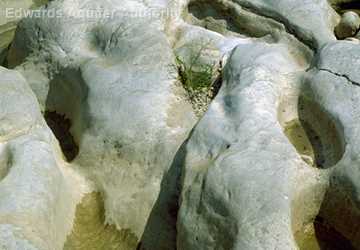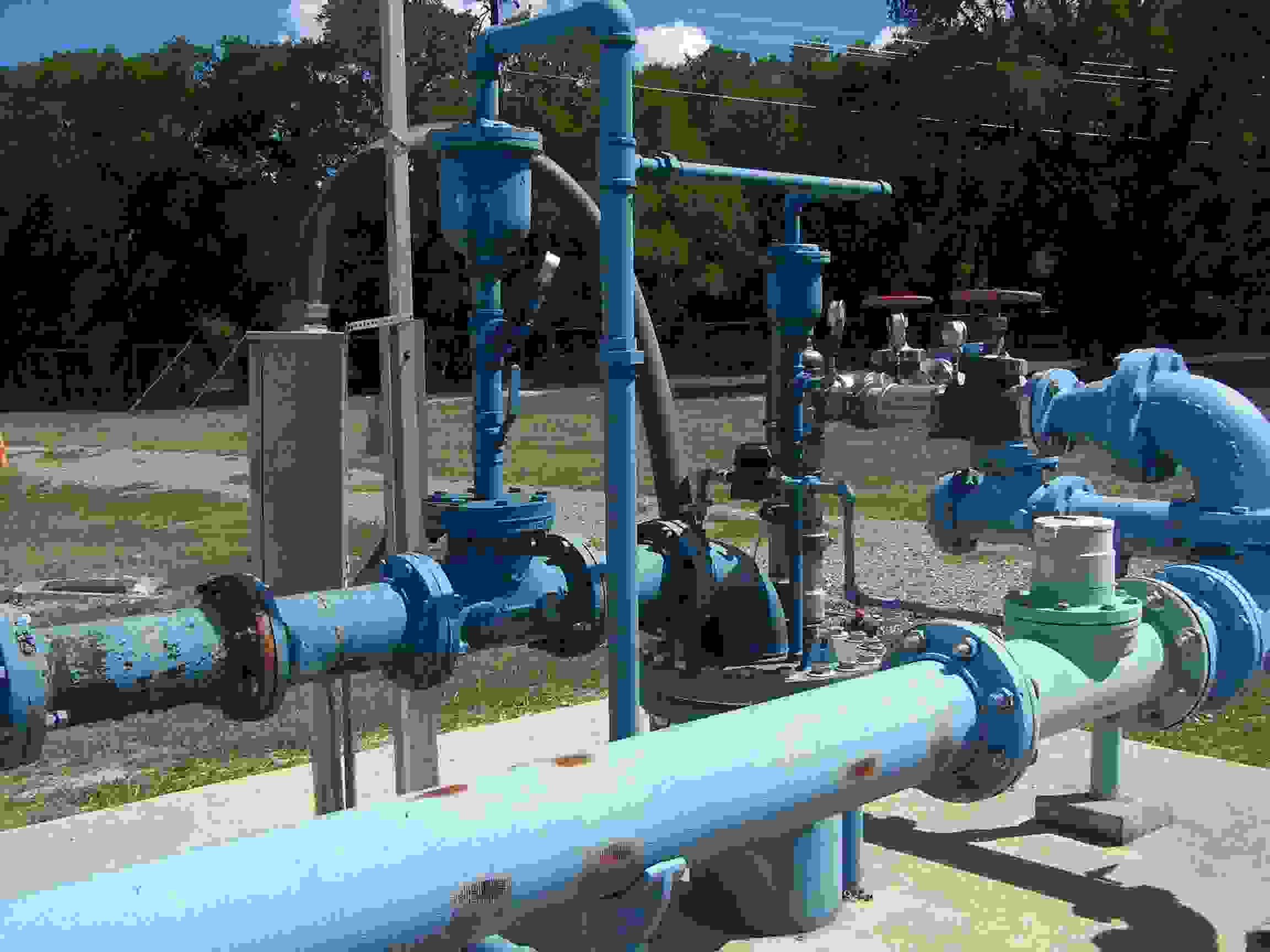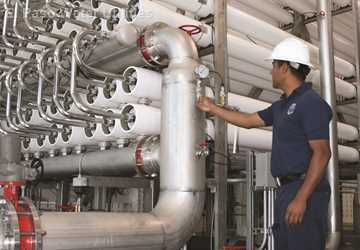There are two main parts of the complex, multi-faceted process that is groundwater administration in Texas: the management side and the planning side. It’s the intersection of the two that is presenting some potential hiccups as the 2017 state water plan is being compiled, according to experts.
Texas groundwater management history
Beginning with the Texas Legislature’s passage of a 1949 bill establishing a process for designating underground water reservoirs and creating underground water conservation districts, groundwater conservation districts have been the state’s preferred method of managing groundwater.
There are 99 confirmed districts in Texas, and each is in charge of developing a groundwater management plan. Most also issue permits that regulate groundwater pumping and well-spacing in its district boundaries. The districts, as well as counties not part of a groundwater conservation district, are divided into 16 groundwater management areas that mostly reflect aquifer boundaries.
As part of its groundwater management plan, each district must work with other districts in its groundwater management area to determine desired future conditions (DFCs) of its aquifers. DFCs are the desired, quantified conditions of groundwater resources, such as water levels, water quality, spring flows or volumes, at a specified time or times in the future or in perpetuity, according to the Texas Water Development Board (TWDB).
“Desired future conditions are the management goals for the aquifers,” saidDr. Robert Mace, TWDB deputy executive administrator for water science and conservation. “Sometimes we phrase that as ‘What do you want the aquifer to look like in the future?’ We want that look to extend as far as the planning horizon for water planning, which is 50 years.”
Mace said TWDB takes the DFC for each aquifer and runs groundwater availability models that convert each DFC into a volume number: the modeled available groundwater or MAG. The MAG is the amount of groundwater production, on an average annual basis, that will achieve the DFC.
Desired future conditions are the management goals for the aquifers.
“For example, districts within a groundwater management area may say that for the desired future condition of a certain aquifer, they want springs flowing at 10 cubic feet per second during a drought of record,” he said. “We would run groundwater availability models to determine how much water can be pumped during a repeat of the drought of record and still maintain 10 cubic feet per second and that will turn into a volume number, for example, 100,000 acre-feet per year.”
If pumping exceeds the MAG volume over a number of years, the DFC may not be achieved.
Planning brings challenges
On the planning side, the state has 16 regional water planning groups that work on planning for both surface water and groundwater. Comprised of diverse interests, the groups develop regional water plans that outline water management strategies to ensure water supplies during drought for 50 years in the future and are adopted as part of the state water plan. The state water plan is compiled every five years by TWDB, using the regional plans, and is the go-to document for all water supply project planning in Texas.
Before 2005, groundwater conservation districts and regional planning groups came up with their own numbers for groundwater availability, Mace said. Districts used a number called total usable amount of groundwater and incorporated that number into their groundwater management plans.
“However, regional water planning groups also came up with groundwater availability numbers,” he said, “as well as projects based on those numbers. If a regional planning group planned to use more groundwater than a district’s total amount of usable groundwater availability, the district’s groundwater management plan could not be approved.”
The passage of HB 1763 in 2005 changed that. It regionalized decisions on groundwater availability, Mace said.
The law now requires groundwater conservation districts to work together with other districts in their groundwater management areas to establish DFCs for each aquifer in their management area, even if the aquifer is outside the district’s boundary. And, as the 16 regional water planning groups are working to develop their regional water plans for the 2017 state water plan, all of them, for the first time, have to use the MAG numbers from groundwater conservation districts as their measure of groundwater availability.
“Before HB 1763, the regions trumped the districts,” Mace said. “Now the districts trump the regions.
“So what is happening now,” Mace said, “is that regional planning groups are seeing what those MAGs mean with respect to numbers they have been using in the past. In some cases, the districts have much lower groundwater availability numbers than the planning groups did in prior plans.”
Since some planning groups will now have less groundwater available to use when outlining recommended water management strategies to meet future water needs, they must find alternative sources of water to meet those needs rather than drilling a well, he said. And that can be a “challenge for them.”
“Water planners have to honor the MAGs,” Mace said.
Complicated process impacts regional work
South Central Texas Regional Water Planning Group (Region L) is one region addressing the discrepancy in the groundwater availability numbers. Con Mims, chair of Region L, said the region’s challenge in dealing with MAGs is twofold. Some groundwater conservation districts have permitted, exempted or grandfathered — collectively referred to as “allocated” — groundwater at levels that already exceed the MAG.
“There also is the situation where new groundwater projects being considered by Region L will cause a MAG to be exceeded,” Mims said in an email. “In both instances, Region L must, in its plan, reduce the amount of demand on that aquifer such that the amount taken does not exceed the MAG.”
Mims said in Region L, the MAG limitation most greatly affects planning in the Carrizo-Wilcox Aquifer.
“We have contacted each district involved with the aquifer to determine the amount of its MAG and how much water the district has allocated to date,” he said. “With this information, the amount of supply available for new (groundwater) projects, if any, is calculated. Where MAGs are exceeded or will be exceeded with new projects, the planning group has agreed for planning purposes to reduce all permitted, grandfathered and planned groundwater projects, proportionately, to meet the MAG limits. This results in having to identify alternate water supplies for some projects, even if the project is currently permitted.”
Another issue that the MAG has highlighted is that in some districts, the amount of water already permitted, if used completely, is higher than the MAG.
Where MAGs are exceeded or will be exceeded with new projects, the planning group has agreed for planning purposes to reduce all permitted, grandfathered and planned groundwater projects, proportionately, to meet the MAG limits.
Mims said a district may be willing to allocate water in excess of a MAG if it believes that the DFC can still be met because not all of its permitted water is being used, the segment of the aquifer from which the water is being allocated is underused or for other reasons.
“Because groundwater conservation districts have sole authority to issue permits, Region L needs to be sensitive to that authority and must treat interests that are competing for limited groundwater supplies equitably in the planning process,” Mims said. “Writing a water plan that appears to cut back existing groundwater permits, limit water available for new permits and identify new supplies where none have thought to have been needed, all because of a planning restriction, can be tricky.
“Even without the MAGs, Region L, historically, has footnoted groundwater supplies in its plans stating that the amount being planned for is subject to being permitted by a groundwater conservation district, and backup supplies for the entity needing the water are identified in the plan,” he said.
In addition to the requirement that regional water plans have to include the districts’ DFCs and MAGs in the regional water plans, Mace said because the state has chosen this methodology for managing its aquifers, the state is not going to support, through financing, any activity that would violate districts’ DFCs.
I think this new way of defining available groundwater is good in that it forces the honoring of desired future aquifer conditions, at least from a regional water planning standpoint.
“If a city wants to take advantage of the $2 billion [of the State Water Implementation Fund for Texas(SWIFT)], but the district’s MAG is too low to accommodate the project in that county, then the project is not going to be in the state water plan,” he said. “That means it will not benefit from the preferred financing terms that came out of the SWIFT.”
Although these potential hiccups are still being ironed out, the intersection of management and planning through DFCs and MAGs has positives and negatives, according to the experts.
“It is good in the sense that the overall process is bringing regional water planning into compliance to what the districts want to do and what they are actually doing,” Mace said. “However, it is bad from the perspective of the parties impacted by it, because groundwater tends to be a pretty affordable source of water, so if they can’t get groundwater, their alternatives are far more expensive.”
“I think this new way of defining available groundwater is good in that it forces the honoring of desired future aquifer conditions, at least from a regional water planning standpoint,” Mims said.
Explore this Issue
Authors
As the former communications manager for TWRI, Kathy Wythe provided leadership for the institute's communications, including a magazine, newsletters, brochures, social media, media relations and special projects.











